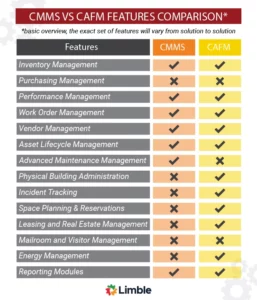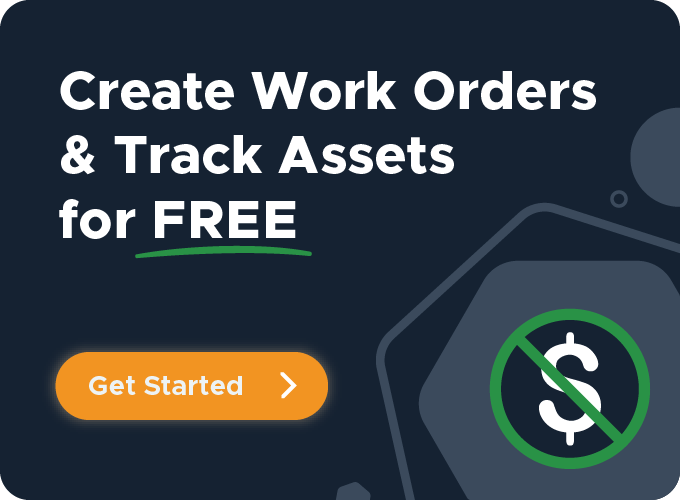Computer-Aided Facilities Management (CAFM) software is a type of computer platform designed to streamline the numerous aspects of facility management, operations, and maintenance. It helps facility managers organize processes, improve space utilization, track assets, schedule maintenance tasks, and generate reports for informed decision-making.
What does a CAFM system do?
CAFM systems focus on broad facility management functions and aim to enhance the overall efficiency and effectiveness of facility operations. It encompasses activities performed by various departments including facility planning, space utilization, asset tracking, lease management, and more.
Organizations use CAFM solutions to:
- Efficiently manage space utilization and allocation
- Track and manage physical assets throughout their lifecycle
- Streamline facility maintenance and work order management
- Optimize move management and space planning processes
- Improve energy management and sustainability initiatives
- Generate comprehensive reports and analytics for informed decision-making
- Streamline lease management and tracking
- Optimize resource allocation and utilization within the facility
- Streamline vendor management and contract tracking
- Support strategic facility planning and budgeting processes.
One of the primary functions that differentiates CAFM programs from other similar solutions is its ability to visualize spaces using CAD (computer-aided drafting) imagery. For this reason, CAFM software can be a valuable tool specifically for any organization that has a strategic need for space planning solutions.
What industries use CAFM software?
CAFM systems are primarily used by organizations responsible for managing large-scale properties with multiple facilities. These organizations often perform facility asset management or deal with a high volume of occupants. It is widely used in industries like:
- Commercial property management
- Healthcare, hospitals, and clinics
- Educational institutions
- Resorts and hospitality
- Multi-facility manufacturing operations
- And more
Standard CAFM features
Different CAFM systems highlight characteristics that differentiate them from one another, but most CAFM systems offer the same baseline list of features and functions. From there, they may get more specialized or advanced, depending on the vendor or focus, but at a minimum, a CAFM system will offer:
- Space planning & management
- Maintenance management
- Physical building administration
- Space reservations
- Reporting
- Energy performance analysis
Benefits of CAFM
If you are in charge of facilities management, it may feel daunting to consolidate management of all your activities onto one platform. While the features and functions may sound helpful, it can be difficult to truly understand how the investment in adding CAFM software will pay off in high-level advantages for your organization.
Here is a breakdown of the most common benefits experienced by organizations using CAFM software.
Reduced costs
CAFM software helps facilities make the best use of their space, ensuring that their occupants’ needs are met and functional space doesn’t go to waste. In addition, better management of assets and facilities lowers maintenance and replacement costs for equipment, and energy expenses for facilities. Finally, any platform that simplifies administrative tasks like documentation, approvals, and scheduling saves staff time and creates efficiency, reducing overall operational costs in the process.
Improved efficiency
Building off the above, platforms like CAFM software can enhance efficiency by centralizing facility management activities and data for easier access and reference. Decision-making becomes easier, and communication between team members is more effective and efficient. Many also offer functionality that streamlines workflows and approvals, reducing routing and approval times, as well as accuracy of information sharing.
Greater employee wellbeing
Comfortable workspaces are productive workspaces. By helping organizations perform more effective and efficient facility management and maintenance, workers have access to facilities conducive to communication, collaboration, and connection. It minimizes stress and ensures a safe working environment.
Empowered facility managers
CAFM software gives facility managers the information they need to be effective and successful in their roles. Centralized data, real-time insights, and automated processes enable quick and sound decision-making and strategic planning. It can also simplify the job of task and workload management, enabling easy oversight and optimization of facility operations.
Enhanced space usage
Many CAFM platforms’ most important feature is its ability to track traffic and occupancy over time, helping facility managers find ways to optimize the way spaces are laid out and used. This can be especially helpful for organizations that are undergoing growth or changes in their workforce such as transitions to hybrid or remote work arrangements. Because facility space is often one of the biggest overhead costs for organizations, improved space usage is one of the biggest benefits of a CAFM system.
Environmental benefits
Any tool that helps organizations achieve more efficient use of resources also brings environmental benefits. CAFM software promotes environmental sustainability by optimizing use of resources, reducing energy consumption, prolonging asset life, and minimizing waste. The data gathered within CAFM software also supports data-driven insights, green building initiatives, and sustainable design and operations.
Improved reporting
CAFM software provides facility managers access to data analytics and reporting that can support sound decision-making. Detailed information on space utilization, maintenance activities, asset performance, and compliance status are valuable insights for facilities managers to have. CAFM systems that offer simple and effective reporting modules help keep this information at the ready.
CAFM versus CMMS software
There is some overlap between the functions of CAFM and CMMS (computerized maintenance management system) software so they do sometimes get confused. However, the two solutions are distinct in their focus, scope, and primary uses.
While a CMMS dives deep into the management of maintenance activities, such as work orders, preventive maintenance schedules, equipment repairs, and inventory management, a CAFM program focuses on broader facility management functions. Similarly, the scope of a CMMS is oriented toward maintenance departments while CAFM programs are used across multiple departments. Their common features demonstrate this even more clearly. For more of a breakdown of the distinction, read our full comparison of CMMS and CAFM.

Should CMMS and CAFM be used together?
While there is a certain overlap between the features they offer, organizations with complex facility management needs may find it useful to implement and integrate both solutions.
Many CAFM systems have limited functionality to organize and manage maintenance work. Supplementing the functions of a CAFM with a CMMS solution can offer comprehensive support for all maintenance management activities.
Finding the right software for your needs
While CAFM works for organizations that need all-encompassing facility management software, many businesses that need a more in-depth solution to manage assets, parts inventory, and maintenance work may want to opt for or integrate with modern CMMS software.
Ultimately, it all depends on the specific needs of your organization. What features do you actually need — and how much you are able/willing to pay for them. To learn more about the solutions that might be right for you, start a free trial or get in touch to schedule a demo!
